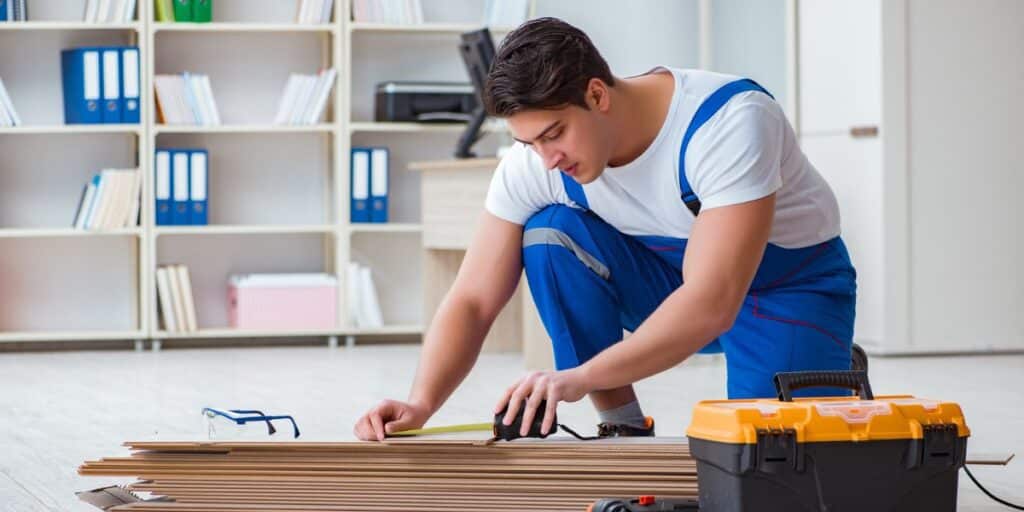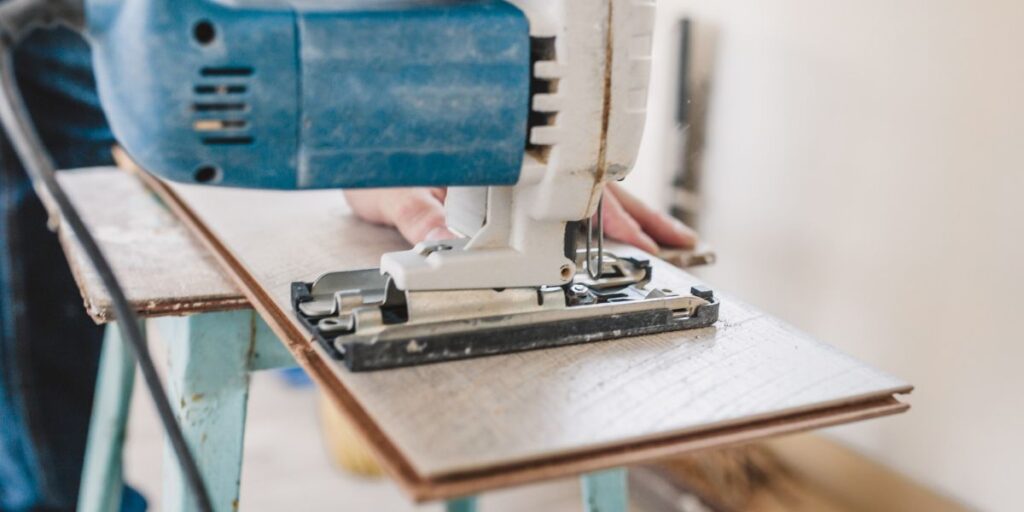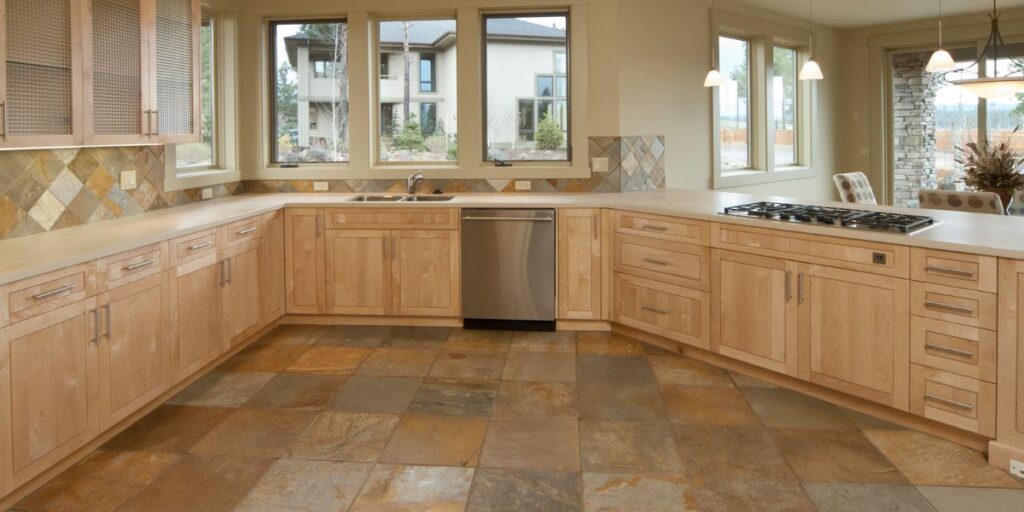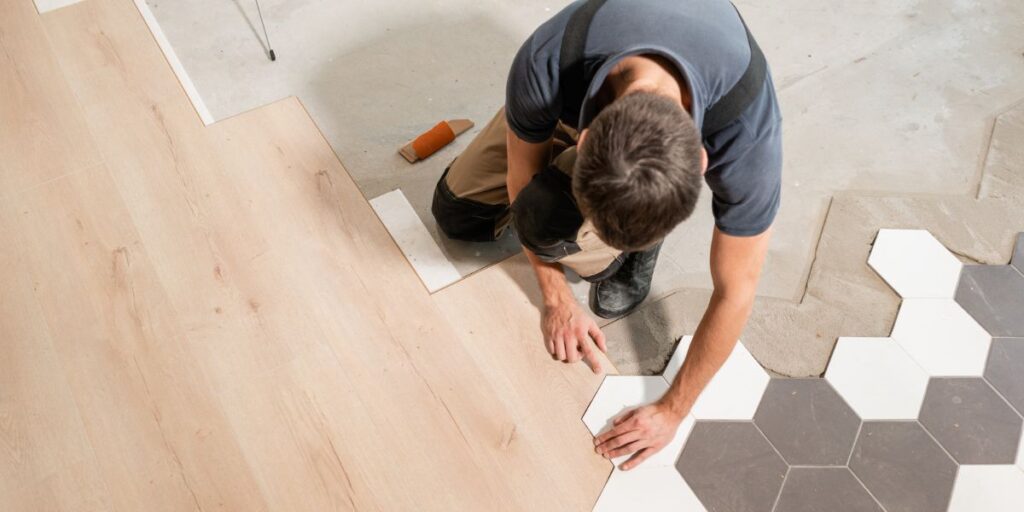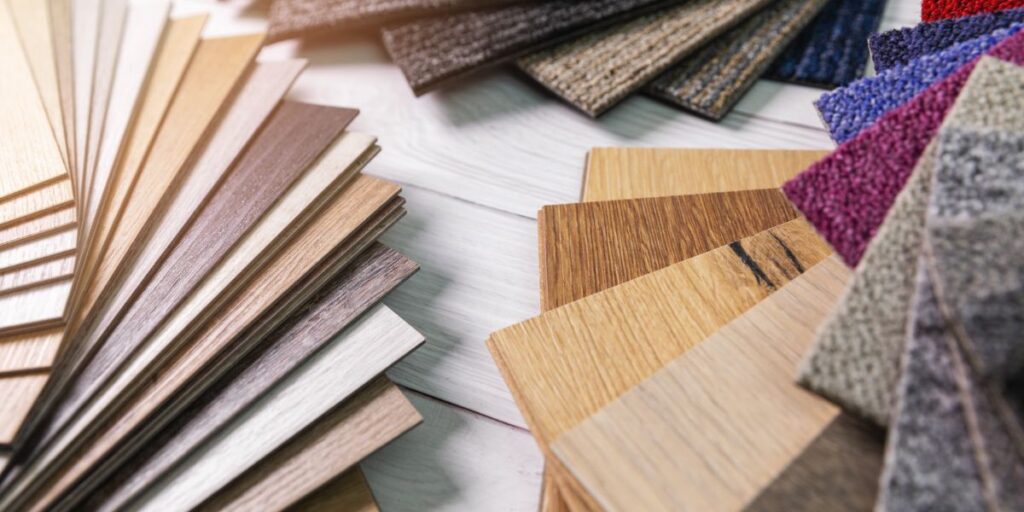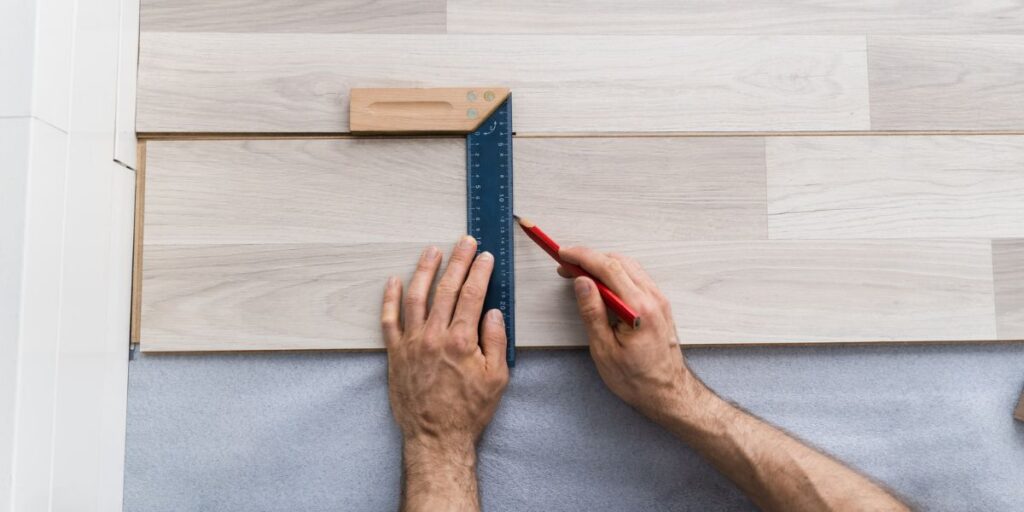
Laminate flooring has been one of the most popular choices for homeowners and business owners alike for several decades. It is a versatile, cost-effective, and easy-to-maintain flooring option that has gained widespread acceptance primarily because of its durability and affordability. However, many people underestimate the importance of knowing how long laminate flooring lasts before investing in it.
The Popularity of Laminate Flooring
Laminate flooring has become increasingly popular in recent years due to its convenient installation process, a wide range of design options, and cost-effectiveness. With the advent of new technologies in manufacturing, laminate floors have become more durable than ever before.
It is now possible to mimic the appearance of wood or stone without spending exorbitant amounts on natural materials. In addition to being budget-friendly, laminate floors have other advantages, such as easy cleaning and maintenance.
They are resistant to scratches and stains, which makes them perfect for high-traffic areas like living rooms or hallways. They are also moisture-resistant, which makes them ideal for bathrooms or kitchens.
The Importance of Knowing How Long Does Laminate Flooring Last
Although laminate flooring is known for its durability, it doesn’t last forever. The lifespan depends on various factors such as the quality of materials used during manufacturing, installation process, maintenance practices etc. Knowing how long your laminate flooring will last is crucial because it helps you make an informed decision when purchasing it. If you’re not aware of how long your laminate floor can last before needing replacement, you could end up spending more money on repairs or replacements than necessary.
Hence it’s important to understand what factors can affect the lifespan so that you can take necessary precautions to ensure longevity. Understanding how long your laminate flooring lasts is essential if you’re considering this type of material for your home or business premises.
It’s important to remember that although most laminate floors offer excellent durability and longevity, there are factors that can affect the lifespan. So, before investing in this type of flooring, do your research and make sure you know what to expect in terms of lifespan.
What is Laminate Flooring?
Laminate flooring is a popular type of flooring that consists of a synthetic material that looks like wood or tile. It is made up of several layers, with the top layer being a high-quality photograph of wood or tile, which gives it the appearance of natural textures and colors. This makes laminate flooring an attractive and cost-effective option for homeowners who want the look and feel of hardwood or tile without breaking the bank.
Definition and Explanation
Laminate flooring is often described as a “floating” floor because it is not secured to the subfloor. Instead, it is installed using a click-and-lock system, with each piece snapping together to create an interlocking pattern. This allows for easy installation and removal, making laminate flooring an ideal choice for those who want to change their flooring frequently.
One notable aspect of laminate flooring is that it is highly durable and resistant to scratches, stains, and dents. This makes it particularly suitable for high-traffic areas such as entryways, kitchens, and living rooms.
RELATED: What is EVP Flooring and Why You Need It for Your Home?
The Different Types of Laminate Flooring Available in the Market
There are several types of laminate flooring available in the market today. These include standard laminates, waterproof laminates, embossed-in-register laminates, and hand-scraped laminates, among others. Standard laminates are some of the most common types available in stores.
They come in various thicknesses ranging from 6mm to 12mm and are suitable for low-traffic areas such as bedrooms. Waterproof laminates are designed to withstand water damage caused by spills or floods.
They often have an additional layer that protects against moisture penetration from below. Embossed-in-register (EIR) laminates emulate natural textures like wood grains by aligning embossing patterns on the surface with print designs underneath.
Hand-scraped laminates have a rustic appearance that mimics the look of distressed wood. They are often used in traditional or country-style homes.
Laminate flooring is an excellent option for homeowners seeking a budget-friendly, attractive, and durable flooring material. With the different types available on the market, it’s easy to find one that suits your needs and personal style.
Factors that Affect the Lifespan of Laminate Flooring
Quality of Materials Used in Manufacturing: Don’t Skimp on Quality!
One of the most critical factors affecting the lifespan of laminate flooring is the quality of materials used in manufacturing. It’s essential to understand that not all laminate flooring is created equal, and cheaper doesn’t necessarily mean better. In fact, opting for low-quality materials can significantly reduce a floor’s longevity and cost you more money in the long run.
When selecting laminate flooring, be sure to research and compare different manufacturers and their products. Take note of features such as thickness, density, abrasion resistance ratings, and water-resistant capabilities.
These features directly impact how well your flooring will hold up over time. Don’t be tempted by cheap prices or flashy designs; prioritize quality materials that ensure long-lasting durability.
Installation Process and Quality: Trust a Professional
Proper installation is crucial to maximizing a laminate floor’s lifespan. Even if you’ve opted for high-quality materials, shoddy installation practices can significantly decrease your floor’s overall durability. It may be tempting to save money by installing your laminate floors yourself or hiring an inexperienced installer.
However, it’s worth investing in an experienced professional who has a track record of successful installations. Professional installers have access to specialized tools and techniques that ensure proper alignment and secure attachment to subfloors.
They also know how to avoid common mistakes like improper acclimation or insufficient expansion gap allowances. If you’re serious about getting the most out of your laminate floors, don’t skimp on professional installation!
Maintenance and Care Practices: Cleanliness is Next to Longevity
Proper maintenance practices are essential for extending a laminate floor’s life span. The good news? This one is mostly under your control!
Regular upkeep will keep your floors looking and performing their best for years to come. Some key maintenance practices include sweeping or vacuuming regularly to avoid scratching from dirt and debris.
Avoid using harsh chemicals that can damage the surface or cause discoloration. Instead, opt for specialized laminate floor cleaning products that are gentle but effective.
Other tips include avoiding high-heel shoes that can dent the flooring or placing area rugs in high-traffic areas to minimize wear and tear. By following these maintenance and care practices, you’ll be able to maximize your investment and enjoy your floors for many years.
Average Lifespan of Laminate Flooring
Laminate flooring has become increasingly popular in recent years due to its affordability and durability. However, not all laminate flooring is created equal, and the lifespan of your floors can vary depending on the quality of materials used in manufacturing, the installation process, and how well you maintain them. On average, laminate flooring can last anywhere from 10 to 30 years.
The lifespan will depend on several factors, such as the type of laminate used and how it’s installed. Cheaper laminates may only last around 10 years, while higher-end options can last up to 30 years with proper maintenance.
The Expected Lifespan of Different Types of Laminate Flooring
Thicker laminates typically have a longer lifespan than thinner ones. The AC rating is a good indicator for determining the expected lifespan of your floor.
AC rating refers to a durability test that rates laminate flooring based on its ability to withstand wear and tear. AC1-rated floors are designed for light residential use and have a lifespan of around five years.
AC2-rated floors are designed for moderate residential use and have an expected lifespan of around eight years. AC3-rated floors are designed for heavy residential use or light commercial use with an expected lifespan between ten to fifteen years.
If you want your laminate floor to last even longer, consider investing in an AC4 or AC5-rated floor. These are designed for commercial use but can also be great for high-traffic areas in homes with pets or kids.
How to Determine When It’s Time to Replace Your Laminate Flooring
While most laminate floors come with warranties that span several years, it’s essential to keep track of when you installed them because that could determine when they need replacement. Pay close attention to signs like bubbling or warping; these may indicate water damage underneath the floorboards, which could lead to mold and mildew growth.
Another sign that it may be time to replace your laminate flooring is if the color starts to fade or if the finish wears off. If you see any cracks or chips, it’s time to replace those areas right away before they get worse.
Laminate flooring can last for a long time with proper care and maintenance. The expected lifespan of your floor depends on several factors, including the quality of materials used in manufacturing, the installation process and how well you maintain them.
If you want your laminate floor to last as long as possible, invest in high-quality materials and hire a professional installer. Keep an eye out for signs that it’s time for a replacement so that you can avoid any costly repairs down the line.
Tips to Extend the Lifespan of Your Laminate Flooring
Proper Installation Techniques
Let’s start with the most crucial aspect of ensuring that your laminate flooring lasts for a long time- installation. Trust me when I say this, but you don’t want to skimp on this step. Improper installation can cause your floors to become loose, buckle, or warp.
Hire a professional if you’re unsure about doing it yourself. If you plan on doing it yourself, make sure you follow all instructions and guidelines provided by the manufacturer.
Another thing you must consider is the subfloor. You need to make sure that it’s level and clean before laying down your laminate flooring.
The last thing you want is for your floors not to sit flush with each other because of an uneven subfloor. Additionally, leaving any debris or dirt on the subfloor can affect how well the adhesive works.
Pay attention to expansion gaps around areas where there may be moisture, like bathrooms or kitchens. These areas require more space for expansion and contraction due to temperature changes than others.
Regular Cleaning and Maintenance Practices
Cleaning and maintaining your laminate floors regularly is critical in ensuring longevity. Regular cleaning will prevent dirt buildup, which leads to scratches and damage over time.
Start by sweeping or vacuuming your floors daily to remove any debris or dust particles that may scratch its surface. When mopping, use a damp mop rather than a soaking wet one, as excess water can seep between gaps causing swelling and damage over time.
Never use abrasive cleaners as they’ll scratch the surface of your laminate flooring leaving behind permanent marks and damages. For stubborn stains, try using natural solutions like vinegar diluted in water rather than harsh chemical cleaners.
RELATED: Revamp Your Floors: The Ultimate Guide to Installing New Flooring Over Ceramic Tile
Avoiding Common Mistakes That Can Damage Your Laminate Flooring
While taking care of your laminate flooring regularly is important, it’s equally important to avoid common mistakes that can cause damage. Never drag heavy furniture across your laminate flooring. Always lift it and carry it to avoid scratching or damaging its surface.
If you must move heavy furniture, use furniture pads underneath the legs to prevent scuff marks. Ensure that you don’t allow any standing water on your laminate flooring.
The longer the water sits, the more damage it will cause. Be cautious of leaks in appliances like dishwashers and washing machines, as they can go unnoticed for long periods, causing significant damage.
Proper installation techniques, regular cleaning and maintenance practices, and avoiding common mistakes that can damage your laminate flooring are crucial if you want them to last for years to come. Remember that prevention is better than cure when it comes to your floors!
Frequently Asked Questions
What is the downside to laminate flooring?
The downside to laminate flooring is that it can be more prone to moisture damage compared to other flooring options, and it is generally not as durable or long-lasting as materials like hardwood or tile. Additionally, laminate flooring cannot be refinished or repaired easily if it gets damaged.
How often does laminate need to be replaced?
The lifespan of laminate flooring can vary depending on factors such as the quality of the product, the level of foot traffic, and the maintenance provided. On average, laminate flooring can last 10 to 25 years before needing replacement.
What lasts longer, vinyl or laminate flooring?
Vinyl flooring typically lasts longer than laminate flooring due to its superior durability and resistance to moisture, scratches, and wear. Properly maintained vinyl flooring can often last 20 years or more, making it a longer-lasting option compared to laminate.
Does laminate flooring scratch easily?
Laminate flooring can be prone to scratching, especially in high-traffic areas or if sharp objects are dragged across the surface. However, modern laminate floors often have protective wear layers that help minimize the risk of scratching, and using furniture pads or felt under furniture legs can further reduce the potential for scratches.
Can you mop the laminate flooring?
You can mop laminate flooring, but it is important to use a damp mop or microfiber mop instead of excessive water. Excessive moisture can seep into the seams and cause damage to the laminate. It is advisable to use a cleaner specifically formulated for laminate flooring or a mixture of mild soap and water for regular cleaning.
Which is better, laminate or vinyl?
Whether laminate or vinyl flooring is better depends on individual preferences and specific needs. Laminate flooring typically offers a wide range of styles and designs, including options that mimic the look of hardwood. Vinyl flooring, on the other hand, is highly resilient and waterproof, making it ideal for areas prone to moisture or high foot traffic.
Conclusion
Laminate flooring is a popular choice for many homeowners due to its affordability, versatility, and durability. However, it’s important to understand how long laminate flooring lasts and what factors can affect its lifespan. By considering the quality of materials used in manufacturing, proper installation techniques, and regular maintenance practices, you can extend the lifespan of your laminate flooring.
In today’s market, where there are so many options available for flooring solutions, it can be overwhelming to choose what is best suited for you. However, after reading this article now you know that laminate flooring is one of the most durable flooring out there and has a long life span if properly maintained.
It’s not just about choosing the right type of laminate but also about taking care of it well. With proper installation techniques that prevent moisture from seeping in beneath the surface and regular cleaning routines that keep dirt and debris from causing wear and tear over time, your laminate floors will remain beautiful for years to come.
So whether you’re looking to replace outdated vinyl or simply want an affordable option that looks great in any room of your home – consider laminate! Its easy-to-clean surface is perfect for families with children or pets – and with so many textures available nowadays (from rustic wood grains to sleek modern finishes), there really is no limit to what style statement you can make with this versatile material.
RESOURCE: Occupational Safety and Health Administration (OSHA): Cleaning Industry Safety and Health

